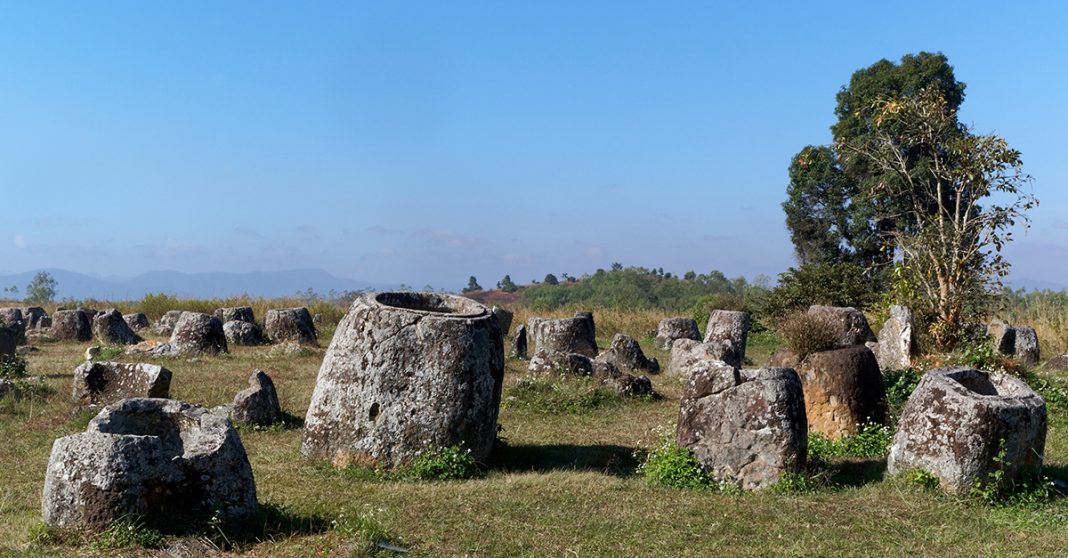The Plain of Jars in Xiangkhouang Province, Laos, has been added to the list of World Heritage Sites by the United Nations Educational, Scientific and Cultural Organization (UNESCO).
The announcement was made at the 43rd Session of the World Heritage Committee held in Baku, Azerbaijan, on July 5.
The Plain of Jars, located on a plateau in northern Laos, is named for the more than 2,100 tubular-shaped megalithic stone jars that are believed to have been used for funerary practices in the Iron Age, according to UNESCO.
Human remains, burial goods, and ceramics discovered at the site dated by comparative material from Dong Son in Viet Nam, to the Early Iron Age from approximately 500 BCE to 800 CE. The site has been shrouded in mystery for some time.
Laos has been working for 20 years to have the Plain of Jars listed as a World Heritage Site.
In 1998, the Lao government joined hands with UNESCO to initiate a multi-year phased program to safeguard and develop the site.
The program was designed to put mechanisms in place that ensure ongoing protection of the heritage resources linked to bringing socio-economic benefits for the local communities.
At that time, the Lao government expressed commitment to protect and develop the Plain of Jars and nominate the site for World Heritage inscription.
The inscription of the Plain of Jars means that the Plain of Jars is Laos’ third World Heritage Site. The old town of Luang Prabang in Luang Prabang province was inscribed in 1995, followed by Vat Phou and associated Ancient Settlements within the Champasak Cultural Landscape in 2001.
Apart from the Plain of Jars, UNESCO inscribed another six cultural sites in other countries on the World Heritage List.
They were the Dilmun Burial Mounds in Bahrain, Budj Bim Cultural Landscape in Australia, Archaeological Ruins of Liangzhu City in China, Jaipur City in Rajasthan, India, Ombilin Coal Mining Heritage of Sawahlunto in Indonesia, and the Mozu-Furuichi Kofun Group: Mounded Tombs of Ancient Japan in Japan.



